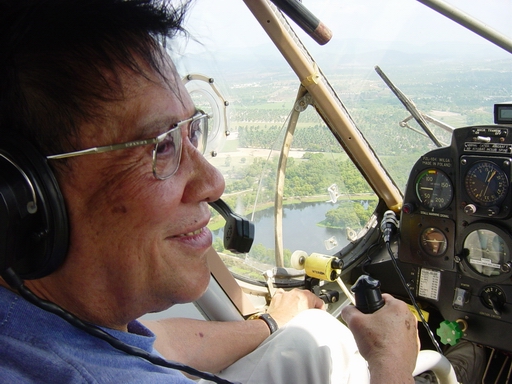Address
304 North Cardinal St.
Dorchester Center, MA 02124
Work Hours
Monday to Friday: 7AM - 7PM
Weekend: 10AM - 5PM
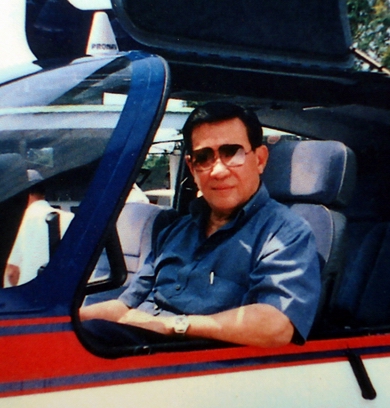
72 years old, and he is still flying. He began flying in the Buddhist Era 2472 at the Civil Flight Training facility (604 Squadron) of the Royal Thai Air Force in Don Muang airport. The head of the group at the time was Col. Prasopsuk. Adjan Krisda learned to fly in a Dehavilland Chipmunk, and his instructor told him during the training, “don’t try to do something that you haven’t been taught to do.” The Chipmunk is a taildragger, and at the time, Adjan Krisda did not know that it was a difficult aircraft to land, because it was the first aircraft he ever flew; “the plane was older than me!” At the time, Adjan Krisda was an Associate Professor at Chulalongkorn University in Bangkok teaching Architecture, and he was also running his own Architectural practice. Previous to this, he was a Captain in the Royal Thai Army, and he later served 2 years as Deputy Governor of Bangkok and 4 years as Governor of Bangkok.
Adjan Krisda first went to USA at age 16 to study at Wilbraham Academy Prep school in West Springfield, Massachusetts. He then was accepted at M.I.T. in 1950. He said that M.I.T. wanted to flunk out 1/3 of the incoming students after Freshman year, so the environment was very competitive. He chose to study Architecture because he wanted to use his life to create something beautiful that would outlast his own life. He was offered a scholarship by the Thai Government, but he didn’t accept it, because he felt that it should go to someone else who needed it more than him. When he returned to Thailand with his Masters from M.I.T., he had to fulfill his military service. His mother’s friend was close to General Sarit, so he volunteered to be an officer and started as Captain in the engineering Army camp in Pranburi. He also served as a Liason Officer for an American General (2500-2503) before the coup d’etat by General Sarit.
At the age of 40, Adjan Krisda had two sons (age 9 and 10). His father-in-law was very keen on radio-controlled planes which had a wingspan of 2 meters and taught Adjan Krisda’s two sons to fly them. Adjan Krisda saw that his two sons were proficient, but realized that he was not, so he thought he should learn to fly a real airplane instead. He was elected president of his flight class (which 6-7 months). There was not really a ground school, they just started landing. If you could land smoothly ten times in a row, then you could go solo. He was “dying to solo.” He was not scared, but really wanted to do it. During his first flight, the instructor did some aerobatics with him, and the front panel of the plane fell in his lap. It was shaky, and that first flight was confusing for him, but he continued with his training and was able to solo. Adjan Krisda pulled out a 40 year old black book to show me, and inside is written – “Solo Aircraft #66 on 22 Dec 1972 (Don Muang Airport)” – His first solo flight. His training was completed on 04 Apr 1973. He remembers that he ordered the Jeppessen manual to study and did not pass 1 of his 6 exams, so he got that teacher who had not passed him to give him the private lessons to complete his training. Adjan Krisda was awarded THAI PRIVATE PILOT LICENSE #2. One year before him, Thai Private Pilot License #1 had been issued to Prachan Gunakasem (a business man and a friend of Adjan Krisda whose brother was past Minister of Foreign Affairs and whose father was Minister of Finance).
“At that time, we had to wait 2 hours for a 15 minute flight at the 604 Squadron (and it took 30 minutes to get there!), so we were annoyed.” This is when they thought they should find a private place to do their flying that was less busy than Bangkok. Adjan Krisda visited air rallies in Malaysia and Singapore, and even in Laos, they had private licenses, but not in Thailand. They presented a proposal to the Minister of Communication to have Private Flying Licenses, but the answer was No. No one could do it. The committee of the Air Force and the DCA thought it would be dangerous for private people to have airplanes. Adjan Krisda spoke to the Deputy Minister of Communications (equivalent of Lt. Col. in the Air Force). He was the brother of Thanpooying La-Iad whose husband was Luang Pibul Songkran. Adjan Krisda explained “we are having difficulty trying to fly….” There has only ever been one Field Marshall in the history of Thailand – Field Marshall Fuen Ronnapakas Riddhagni and he was an ardent flier. At Don Muang Airport, the right side was commercial and the left side was military. When Field Marshall Fuen was in his 70’s he still loved to fly. They would lift him up onto the wing and put him in his seat. They would then clear the left runway for him. He would report his position by radio, but he could not hear very well, so aircraft were put on hold. He flew solo. Adjan Krisda was advised to go to see Field Marshall Fuen and to make him President of the Thai Flying Club. This is a position that “he gladly accepted.” After this, the Deputy Minister of Communications presented the case for having a private flying field to the Board of Aviation. Apparently, he said that “we have a Field Marshall who supervises all Thai Airspace. If this Field Marshall cannot control this small flying club, I suggest we relieve him of his title of Air Marshall.” (Dep. Min. Communications). Adjan Krisda recounted many stories of aviation at the time and that the fear was that anyone with an aircraft would want to transport opium*. He also recounted how the Field Marshall had to fly every aircraft in the Air Force. This led to the beginning of the Thai Flying Club. First it was based at Don Muang. Then it was based at Lopburi (Royal Thai Army). Adjan Krisda did 30 hours flying in a helicopter, and he remembers fondly walking around the house balancing a ball on a ping pong paddle to simulate the delicateness of the cyclic control. He also thinks the best simulator he ever used was sitting on a toilet with a rubber plunger stuck to the floor in front of him.
The Rajamangala Institute of Technology at that time was interested in setting up a Department of Aeronautical Mechanics. This led the Thai Flying Club to the location in Bang Phra. The club members in the early days suggested to Rajamangala, “let us use your runway, and we will pave it and build hangars and bring aircraft. Then when you have aircraft, you can use these facilities.” Khun Prasom was the person who organized all of this. He is a very direct and smart person with the right spirit to get the job done. Khun Prasom was involved with building the runway in Bang Phra as it exists today.
Adjan Krisda’s first aircraft was a PA-235 with Khun Prachan. He liked it very much. It was a true 4 seater that you could fly with 4 people, full fuel and golf bags. His second aircraft was a partnership in a Grumman Tiger with Khun Thira. He felt this aircraft had beautiful light controls and was very responsive. His third aircraft was a TB-21 Socata with M.R. Opas Kanjanavijaya. He likes it. Adjan Krisda’s fourth aircraft was a Mooney 201 which he bought used from Bill Heinecke. He had endless trouble with it; it would heat up and wouldn’t start, then an Australian bought it for 3 million Baht. At one time, Adjan Krisda owned 1 aircraft and shares in 2 others. Adjan Krisda feels that the potential for General Aviation in Thailand today is pull pilots of Ultralight aircraft into Real aircraft. He feels that flying clubs should strive to provide easier access and cheaper ground schools to inspire and promote flying to young Thai people and thereby encourage more people to become pilots. He also thinks that the future is bright for 100 horsepower trainers. Technology is improving, so we can make better use of what is available today to get more pilots and get more planes!
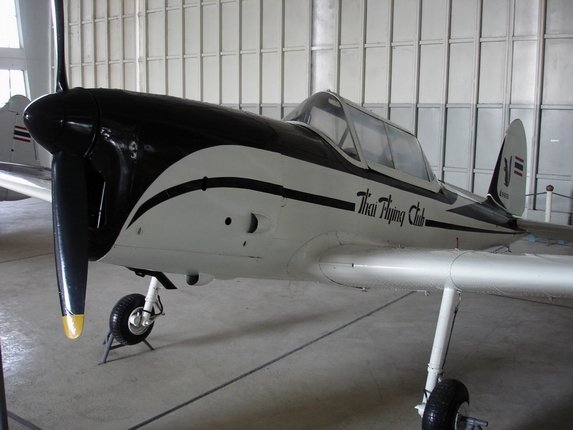
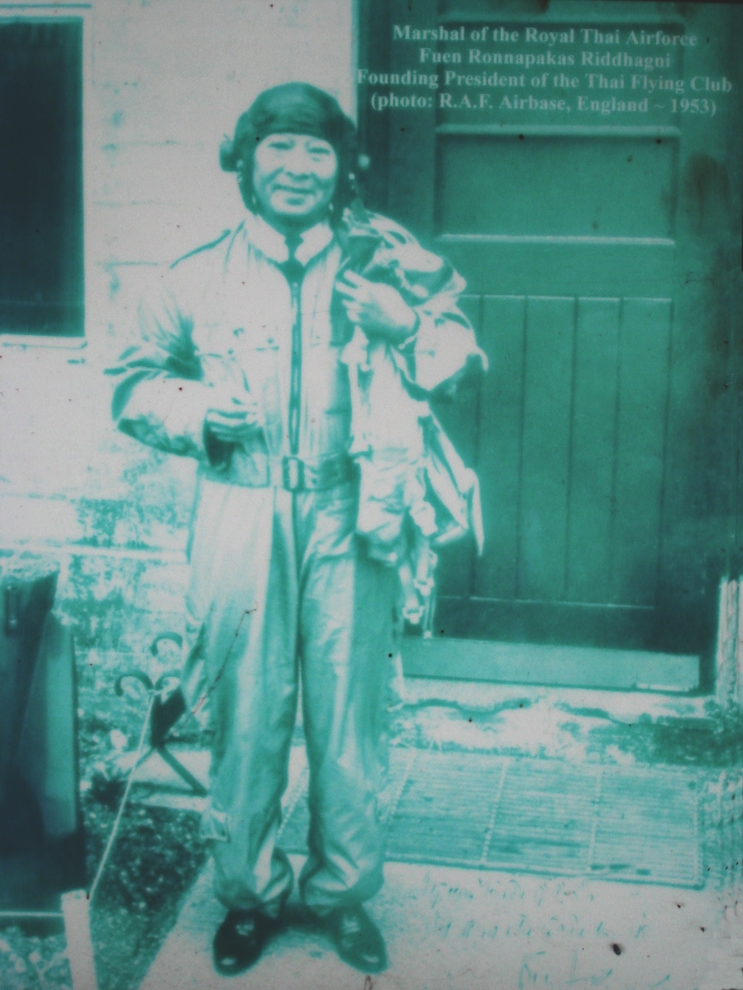
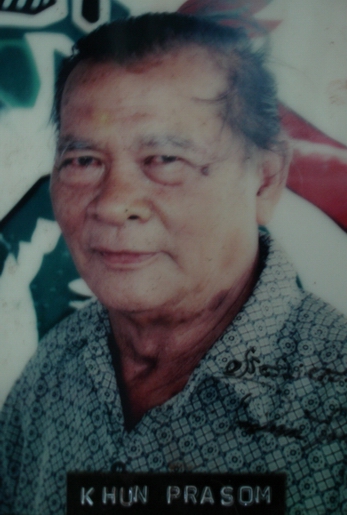
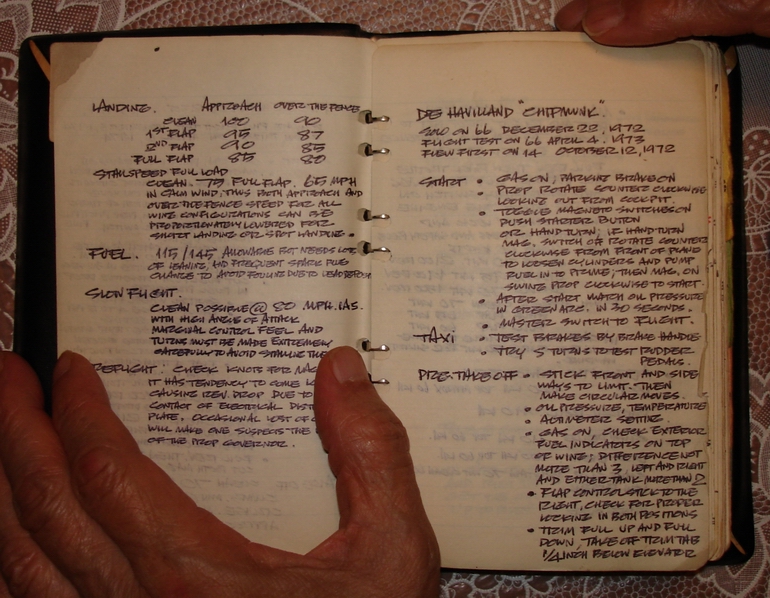
Adjan Krisda feels that General Aviation can benefit Thailand in two main ways. The first is duty in business. He is currently the Vice President of an association trying to promote aviation industry in Thailand – “Samakom-Ootsahakam-Ganbin-Hang-Pratet-Thai.” He also believes it will be of economic benefit to promote General Aviation in Thailand (for developing Thai industry to overhaul engines, repair radios, maintain aircraft). Personally, Adjan Krisda feels that flying has given him pleasure and a “better approach to work and sport.” When he used to play golf before flying and had to attempt a 4 foot putt, he would feel tense and uncomfortable. After learning to fly, he would ask himself, “what do I loose… a small bet.” Flying has taught him to be careful and to concentrate on the preflight and the weather, so he can relax and enjoy the flying. Adjan Krisda’s wife took flying lessons and completed her solo. Adjan smiled and said he used the “gift technique” to inspire her – “if you do this, I will give you the best 1 carat diamond you can find.” His wife Noi was going to quit before solo, but this technique worked and she mastered landing over the tree at the end of the Chonburi airstrip to fly solo. Adjan Krisda’s two sons have told him that the two sports they do not want to do are flying and shooting, because these are the sports that their father does so well.
Adjan Krisda reminded me that it was during the reign of Rama VI that aviation started in the Kingdom of Siam (with 3 aircraft from France landing at the Royal Bangkok Sports Club). This was a period of Absolute Monarchy (Pra-Maha-Thira-Ra-Jow) and no one would ever question the King’s wish. King Rama VI was in Europe at age 15, and World War I made him realize the importance of relationships to maintain the Kingdom at a time of Colonialist expansion by Europe. During the reign of Rama VII there was a revolution by the military and establishment of a Constitutional Monarchy. Rama I and his brother were warriors under King Taksin. Rama I gained all the territory (Laos, Cambodia, Burma). Adjan Krisda advised me that in Thailand, you don’t talk to your majesty, “you talk to the smallest dirt under your foot” (Dai-Fah-La-Ong-Too-Lee-Prabat) (under particle dust of King’s feet). This shows the absolute respect and humility that Thai people have shown to their Kings through the course of their history.
